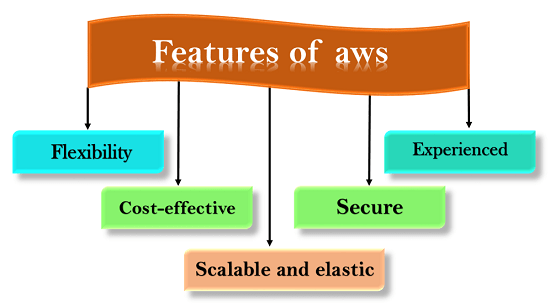In the ever-evolving landscape of technology, cloud computing has emerged as a game-changer, enabling businesses to scale, innovate, and optimize their operations like never before. At the forefront of this cloud revolution is Amazon Web Services, popularly known as AWS. In this article, we will delve into the world of AWS to understand what it is, why it matters, and how it can benefit businesses of all sizes.

What is AWS?
Amazon Web Services (AWS) is a comprehensive and widely adopted cloud computing platform offered by Amazon. Launched in 2006, AWS provides a range of cloud services that include computing power, storage, databases, machine learning, analytics, security, and more. These services are delivered over the internet, allowing organizations to access and utilize them on a pay-as-you-go basis, eliminating the need for significant upfront infrastructure investments.
Key Components of AWS
AWS encompasses a vast array of services, and while it’s challenging to cover them all, let’s explore some of the core components:
- Compute: AWS offers multiple compute services, including Amazon EC2 (Elastic Compute Cloud) for scalable virtual servers, AWS Lambda for serverless computing, and more. This flexibility allows you to choose the right compute resources for your specific needs.
- Storage: AWS provides scalable and secure storage options like Amazon S3 (Simple Storage Service) for object storage, Amazon EBS (Elastic Block Store) for block storage, and Amazon Glacier for archiving data.
- Databases: You can leverage managed database services like Amazon RDS (Relational Database Service), Amazon DynamoDB for NoSQL databases, and Amazon Redshift for data warehousing.
- Networking: AWS offers a wide range of networking services, including Amazon VPC (Virtual Private Cloud), AWS Direct Connect for dedicated network connections, and Amazon Route 53 for domain registration and DNS management.
- Security: AWS takes security seriously and provides services like AWS Identity and Access Management (IAM), AWS WAF (Web Application Firewall), and AWS Shield for DDoS protection.
- Machine Learning: With Amazon SageMaker and other machine learning services, AWS empowers businesses to build, train, and deploy machine learning models at scale.
- Analytics: AWS provides tools like Amazon EMR (Elastic MapReduce) for big data processing, Amazon QuickSight for business analytics, and Amazon Kinesis for real-time data streaming.

Why AWS Matters
- Scalability: AWS allows businesses to scale resources up or down as needed, ensuring they can handle sudden spikes in demand or reduce costs during periods of lower activity.
- Cost-Efficiency: With a pay-as-you-go pricing model, organizations can avoid upfront infrastructure costs and only pay for the resources they consume, making AWS cost-effective.
- Global Reach: AWS operates data centers in multiple regions worldwide, enabling businesses to reach a global audience with low-latency services.
- Reliability: AWS’s infrastructure is designed for high availability and fault tolerance, offering a 99.99% uptime service level agreement (SLA).
- Innovation: AWS continually introduces new services and features, allowing businesses to stay at the forefront of technological advancements.
- Security: AWS provides robust security measures and compliance certifications, helping organizations protect their data and meet regulatory requirements.
Conclusion
Amazon Web Services (AWS) has transformed the way businesses operate by offering a vast array of cloud computing services. Its flexibility, scalability, cost-efficiency, and global reach have made it the go-to choice for startups, enterprises, and governments worldwide. As technology continues to evolve, AWS will likely play an increasingly vital role in helping organizations innovate, grow, and succeed in an increasingly digital world. Whether you’re a seasoned IT professional or just starting your cloud journey, AWS is a force to be reckoned with, and understanding its capabilities is crucial in today’s competitive landscape.


